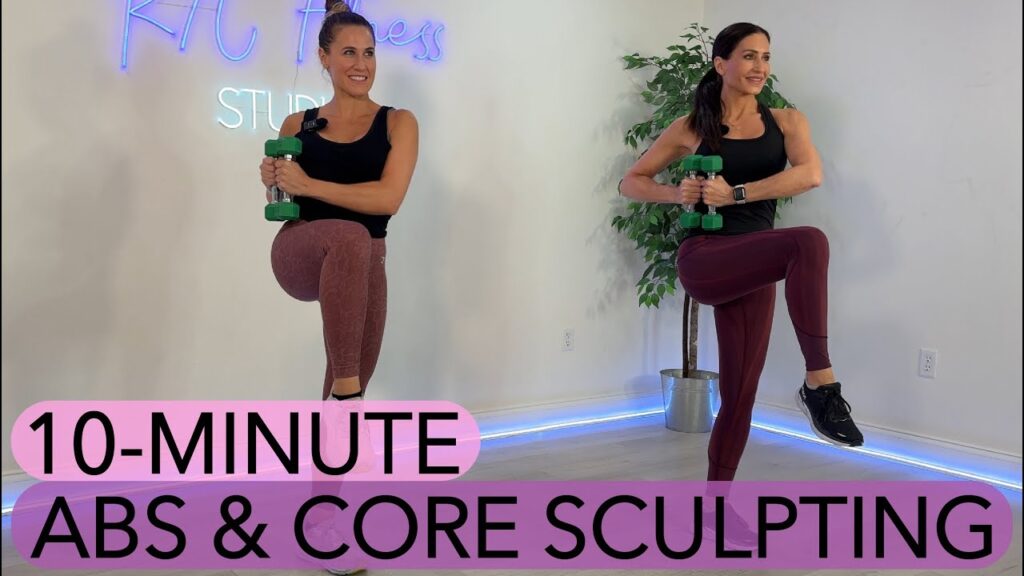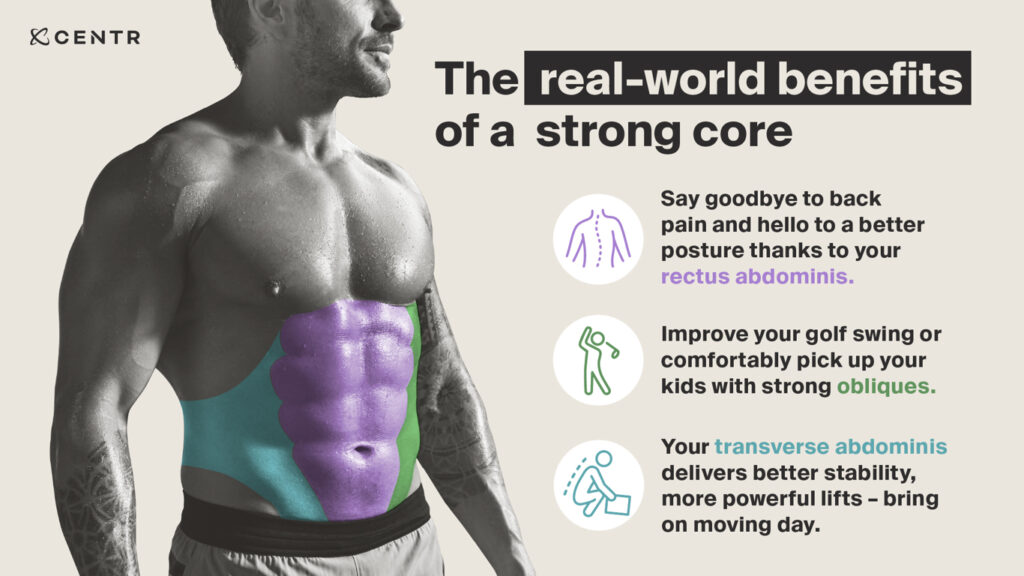Sculpt Your Abs: A Comprehensive Guide to Building a Strong and Defined Core. The quest for sculpted abs is a perennial pursuit, often fueled by societal pressures and the allure of a toned physique. However, the journey towards a defined core goes far beyond aesthetics. Strong abdominal muscles play a crucial role in overall health, contributing to posture, balance, stability, and athletic performance. This comprehensive guide delves into the science behind abdominal training, explores effective exercises, emphasizes the importance of nutrition, and addresses common misconceptions, providing you with the knowledge to sculpt your abs effectively and sustainably.
I. Understanding the Abdominal Muscles: Anatomy and Function
Sculpt Your Abs: A Comprehensive Guide to Building a Strong and Defined Core. Before embarking on any training program, understanding the anatomy and function of the abdominal muscles is paramount. The core comprises several muscles that work synergistically to stabilize the spine and facilitate movement.
- Rectus Abdominis: This is the most superficial abdominal muscle, running vertically along the front of the abdomen. It’s responsible for spinal flexion (bending forward) and is often referred to as the “six-pack” muscle. Visible definition depends on body fat percentage.
- External Obliques: Located on the sides of the abdomen, these muscles run diagonally downwards and inwards. They contribute to spinal flexion, lateral flexion (bending sideways), and rotation.
- Internal Obliques: Situated beneath the external obliques, these muscles run diagonally upwards and inwards. They perform similar functions to the external obliques, but on the opposite side of the body.
- Transversus Abdominis (TVA): This is the deepest abdominal muscle, wrapping horizontally around the torso. It acts like a corset, providing spinal stability and compressing the abdominal contents. It plays a crucial role in posture and core strength.
- Other Core Muscles: While the above are the primary abdominal muscles, other muscles like the erector spinae (back muscles), multifidus (deep spinal muscles), and quadratus lumborum (QL) also contribute to core stability and function.

II. Effective Exercises for Abdominal Development:
A well-rounded abdominal training program should target all core muscles with a variety of exercises. Here’s a breakdown of effective exercises categorized by muscle group:
- Rectus Abdominis:
- Crunches: A classic exercise, crunches isolate the rectus abdominis. Focus on controlled movements and avoid pulling on the neck.
- Reverse Crunches: This exercise targets the lower abs by bringing the knees towards the chest.
- Leg Raises: Hanging or lying leg raises engage the lower abs and hip flexors.
- Cable Crunches: Using a cable machine allows for progressive overload and increased resistance.
- Plank Jacks: Combines the core stability of a plank with the cardio element of a jumping jack.
- Obliques:
- Russian Twists: This exercise engages the obliques through rotational movements. Using a weight plate or dumbbell increases the intensity.
- Bicycle Crunches: A dynamic exercise that targets both the rectus abdominis and obliques.
- Side Planks: This isometric exercise strengthens the obliques and improves lateral stability.
- Wood Chops: Simulates chopping wood, engaging the obliques in a functional movement.
- Standing Oblique Crunches: Using dumbbells or body weight, bend to the side while keeping the core engaged.
- Transversus Abdominis (TVA):
- Planks: A fundamental exercise for core stability. Focus on maintaining a straight line from head to heels and engaging the TVA.
- Hollow Body Holds: This isometric exercise challenges core strength and stability.
- Dead Bugs: This exercise improves core control and coordination.
- Bird Dogs: This exercise improves core stability and balance while engaging the TVA.
- Abdominal Drawing-In Maneuver (ADIM): Focus on contracting the TVA by drawing the belly button towards the spine. This exercise can be performed in various positions.
- Compound Exercises:
- Squats: Squats engage the core for stabilization and contribute to overall strength and muscle mass.
- Deadlifts: Similar to squats, deadlifts require significant core engagement for spinal stability.
- Overhead Press: This exercise challenges core stability while strengthening the shoulders and upper body.
- Rows: Rows engage the core to maintain a stable base and prevent excessive rotation.
- Lunges: Lunges challenge core stability and balance, particularly during the dynamic movement.

III. Sample Abdominal Workout Routine:
Here’s a sample workout routine that can be modified based on your fitness level and goals:
- Warm-up: 5 minutes of light cardio and dynamic stretching.
- Workout:
- Plank: 3 sets of 30-60 seconds hold.
- Crunches: 3 sets of 15-20 repetitions.
- Reverse Crunches: 3 sets of 15-20 repetitions.
- Russian Twists: 3 sets of 15-20 repetitions per side.
- Bicycle Crunches: 3 sets of 15-20 repetitions per side.
- Side Plank: 3 sets of 30-60 seconds hold per side.
- Leg Raises: 3 sets of 15-20 repetitions.
- Cool-down: 5 minutes of static stretching.
Important Considerations:
- Progressive Overload: Gradually increase the difficulty of your workouts by adding resistance, increasing repetitions, or shortening rest periods.
- Proper Form: Focus on maintaining proper form to avoid injuries and maximize muscle activation.
- Rest and Recovery: Allow your muscles adequate rest to recover and rebuild.
- Listen to Your Body: Pay attention to your body and avoid pushing yourself too hard, especially when starting out.

IV. The Crucial Role of Nutrition:
While exercise is essential for building abdominal muscles, nutrition plays an even more critical role in revealing them. You can have the strongest abs in the world, but they won’t be visible if they’re hidden under a layer of fat.
- Calorie Deficit: To lose body fat and reveal your abs, you need to consume fewer calories than you burn. This can be achieved through a combination of diet and exercise.
- Protein Intake: Protein is essential for muscle building and repair. Aim for 0.8-1 gram of protein per pound of body weight.
- Healthy Fats: Healthy fats, such as those found in avocados, nuts, and olive oil, are important for hormone production and overall health.
- Complex Carbohydrates: Choose complex carbohydrates, such as whole grains, fruits, and vegetables, for sustained energy.
- Fiber: Fiber helps to keep you feeling full and aids in digestion.
- Hydration: Drink plenty of water throughout the day to stay hydrated and support overall health.
- Limit Processed Foods: Avoid processed foods, sugary drinks, and excessive amounts of saturated and trans fats.

V. Addressing Common Misconceptions:
Several misconceptions surround abdominal training, hindering progress and potentially leading to injuries.
- Spot Reduction: It’s impossible to target fat loss in a specific area of the body. Abdominal exercises will strengthen your core muscles, but they won’t magically melt away belly fat.
- Crunches are the Key to Abs: While crunches can help to build the rectus abdominis, they are not the only exercise you need. A well-rounded program should target all core muscles.
- Training Abs Every Day: Abdominal muscles need rest and recovery just like any other muscle group. Overtraining can lead to fatigue and injuries.
- Having Visible Abs Means You’re Healthy: While having visible abs can be a sign of fitness, it’s not the only indicator of health. Overall health encompasses various factors, including cardiovascular health, mental well-being, and healthy eating habits.
- Everyone Can Achieve a Six-Pack: Genetics play a significant role in muscle development and fat distribution. While everyone can improve their core strength and definition, achieving a six-pack may not be realistic or achievable for everyone.

VI. Beyond Aesthetics: The Benefits of a Strong Core:
While the aesthetic appeal of sculpted abs is undeniable, the benefits of a strong core extend far beyond appearance.
- Improved Posture: A strong core helps to maintain proper posture, reducing the risk of back pain and improving overall alignment.
- Enhanced Balance: A strong core is essential for balance and stability, reducing the risk of falls and injuries.
- Increased Athletic Performance: A strong core provides a stable base for movement, allowing you to generate more power and improve athletic performance.
- Reduced Risk of Back Pain: A strong core helps to support the spine and reduce stress on the back muscles.
- Improved Breathing: A strong core can improve breathing efficiency by supporting the diaphragm and abdominal muscles.
- Better Functional Movement: A strong core is essential for everyday activities, such as lifting, bending, and twisting.

VII. Conclusion: A Holistic Approach to Abdominal Development:
Sculpting your abs requires a holistic approach that encompasses exercise, nutrition, and rest. Understanding the anatomy and function of the abdominal muscles, implementing a well-rounded exercise program, prioritizing proper nutrition, and addressing common misconceptions are all essential components of a successful journey towards a strong and defined core. Remember that consistency, patience, and a realistic mindset are key to achieving your goals. Focus on building a strong and functional core that supports your overall health and well-being, and the aesthetic benefits will naturally follow. Embrace the journey, celebrate your progress, and enjoy the numerous benefits of a strong and sculpted core.
The quest for sculpted abs is a perennial pursuit, often fueled by societal pressures and the allure of a toned physique. However, the journey towards a defined core goes far beyond aesthetics. Strong abdominal muscles play a crucial role in overall health, contributing to posture, balance, stability, and athletic performance. This comprehensive guide delves into the science behind abdominal training, explores effective exercises, emphasizes the importance of nutrition, and addresses common misconceptions, providing you with the knowledge to sculpt your abs effectively and sustainably.

I. Understanding the Abdominal Muscles: Anatomy and Function
Before embarking on any training program, understanding the anatomy and function of the abdominal muscles is paramount. The core comprises several muscles that work synergistically to stabilize the spine and facilitate movement.
- Rectus Abdominis: This is the most superficial abdominal muscle, running vertically along the front of the abdomen. It’s responsible for spinal flexion (bending forward) and is often referred to as the “six-pack” muscle. Visible definition depends on body fat percentage.
- External Obliques: Located on the sides of the abdomen, these muscles run diagonally downwards and inwards. They contribute to spinal flexion, lateral flexion (bending sideways), and rotation.
- Internal Obliques: Situated beneath the external obliques, these muscles run diagonally upwards and inwards. They perform similar functions to the external obliques, but on the opposite side of the body.
- Transversus Abdominis (TVA): This is the deepest abdominal muscle, wrapping horizontally around the torso. It acts like a corset, providing spinal stability and compressing the abdominal contents. It plays a crucial role in posture and core strength.
- Other Core Muscles: While the above are the primary abdominal muscles, other muscles like the erector spinae (back muscles), multifidus (deep spinal muscles), and quadratus lumborum (QL) also contribute to core stability and function.

II. Effective Exercises for Abdominal Development:
A well-rounded abdominal training program should target all core muscles with a variety of exercises. Here’s a breakdown of effective exercises categorized by muscle group:
- Rectus Abdominis:
- Crunches: A classic exercise, crunches isolate the rectus abdominis. Focus on controlled movements and avoid pulling on the neck.
- Reverse Crunches: This exercise targets the lower abs by bringing the knees towards the chest.
- Leg Raises: Hanging or lying leg raises engage the lower abs and hip flexors.
- Cable Crunches: Using a cable machine allows for progressive overload and increased resistance.
- Plank Jacks: Combines the core stability of a plank with the cardio element of a jumping jack.
- Obliques:
- Russian Twists: This exercise engages the obliques through rotational movements. Using a weight plate or dumbbell increases the intensity.
- Bicycle Crunches: A dynamic exercise that targets both the rectus abdominis and obliques.
- Side Planks: This isometric exercise strengthens the obliques and improves lateral stability.
- Wood Chops: Simulates chopping wood, engaging the obliques in a functional movement.
- Standing Oblique Crunches: Using dumbbells or body weight, bend to the side while keeping the core engaged.
- Transversus Abdominis (TVA):
- Planks: A fundamental exercise for core stability. Focus on maintaining a straight line from head to heels and engaging the TVA.
- Hollow Body Holds: This isometric exercise challenges core strength and stability.
- Dead Bugs: This exercise improves core control and coordination.
- Bird Dogs: This exercise improves core stability and balance while engaging the TVA.
- Abdominal Drawing-In Maneuver (ADIM): Focus on contracting the TVA by drawing the belly button towards the spine. This exercise can be performed in various positions.
- Compound Exercises:
- Squats: Squats engage the core for stabilization and contribute to overall strength and muscle mass.
- Deadlifts: Similar to squats, deadlifts require significant core engagement for spinal stability.
- Overhead Press: This exercise challenges core stability while strengthening the shoulders and upper body.
- Rows: Rows engage the core to maintain a stable base and prevent excessive rotation.
- Lunges: Lunges challenge core stability and balance, particularly during the dynamic movement.

III. Sample Abdominal Workout Routine:
Here’s a sample workout routine that can be modified based on your fitness level and goals:
- Warm-up: 5 minutes of light cardio and dynamic stretching.
- Workout:
- Plank: 3 sets of 30-60 seconds hold.
- Crunches: 3 sets of 15-20 repetitions.
- Reverse Crunches: 3 sets of 15-20 repetitions.
- Russian Twists: 3 sets of 15-20 repetitions per side.
- Bicycle Crunches: 3 sets of 15-20 repetitions per side.
- Side Plank: 3 sets of 30-60 seconds hold per side.
- Leg Raises: 3 sets of 15-20 repetitions.
- Cool-down: 5 minutes of static stretching.
Important Considerations:
- Progressive Overload: Gradually increase the difficulty of your workouts by adding resistance, increasing repetitions, or shortening rest periods.
- Proper Form: Focus on maintaining proper form to avoid injuries and maximize muscle activation.
- Rest and Recovery: Allow your muscles adequate rest to recover and rebuild.
- Listen to Your Body: Pay attention to your body and avoid pushing yourself too hard, especially when starting out.
IV. The Crucial Role of Nutrition:
While exercise is essential for building abdominal muscles, nutrition plays an even more critical role in revealing them. You can have the strongest abs in the world, but they won’t be visible if they’re hidden under a layer of fat.
- Calorie Deficit: To lose body fat and reveal your abs, you need to consume fewer calories than you burn. This can be achieved through a combination of diet and exercise.
- Protein Intake: Protein is essential for muscle building and repair. Aim for 0.8-1 gram of protein per pound of body weight.
- Healthy Fats: Healthy fats, such as those found in avocados, nuts, and olive oil, are important for hormone production and overall health.
- Complex Carbohydrates: Choose complex carbohydrates, such as whole grains, fruits, and vegetables, for sustained energy.
- Fiber: Fiber helps to keep you feeling full and aids in digestion.
- Hydration: Drink plenty of water throughout the day to stay hydrated and support overall health.
- Limit Processed Foods: Avoid processed foods, sugary drinks, and excessive amounts of saturated and trans fats.
V. Addressing Common Misconceptions:
Several misconceptions surround abdominal training, hindering progress and potentially leading to injuries.
- Spot Reduction: It’s impossible to target fat loss in a specific area of the body. Abdominal exercises will strengthen your core muscles, but they won’t magically melt away belly fat.
- Crunches are the Key to Abs: While crunches can help to build the rectus abdominis, they are not the only exercise you need. A well-rounded program should target all core muscles.
- Training Abs Every Day: Abdominal muscles need rest and recovery just like any other muscle group. Overtraining can lead to fatigue and injuries.
- Having Visible Abs Means You’re Healthy: While having visible abs can be a sign of fitness, it’s not the only indicator of health. Overall health encompasses various factors, including cardiovascular health, mental well-being, and healthy eating habits.
- Everyone Can Achieve a Six-Pack: Genetics play a significant role in muscle development and fat distribution. While everyone can improve their core strength and definition, achieving a six-pack may not be realistic or achievable for everyone.
VI. Beyond Aesthetics: The Benefits of a Strong Core:
While the aesthetic appeal of sculpted abs is undeniable, the benefits of a strong core extend far beyond appearance.
- Improved Posture: A strong core helps to maintain proper posture, reducing the risk of back pain and improving overall alignment.
- Enhanced Balance: A strong core is essential for balance and stability, reducing the risk of falls and injuries.
- Increased Athletic Performance: A strong core provides a stable base for movement, allowing you to generate more power and improve athletic performance.
- Reduced Risk of Back Pain: A strong core helps to support the spine and reduce stress on the back muscles.
- Improved Breathing: A strong core can improve breathing efficiency by supporting the diaphragm and abdominal muscles.
- Better Functional Movement: A strong core is essential for everyday activities, such as lifting, bending, and twisting.
VII. Conclusion: A Holistic Approach to Abdominal Development:
Sculpting your abs requires a holistic approach that encompasses exercise, nutrition, and rest. Understanding the anatomy and function of the abdominal muscles, implementing a well-rounded exercise program, prioritizing proper nutrition, and addressing common misconceptions are all essential components of a successful journey towards a strong and defined core. Remember that consistency, patience, and a realistic mindset are key to achieving your goals. Focus on building a strong and functional core that supports your overall health and well-being, and the aesthetic benefits will naturally follow. Embrace the journey, celebrate your progress, and enjoy the numerous benefits of a strong and sculpted core.